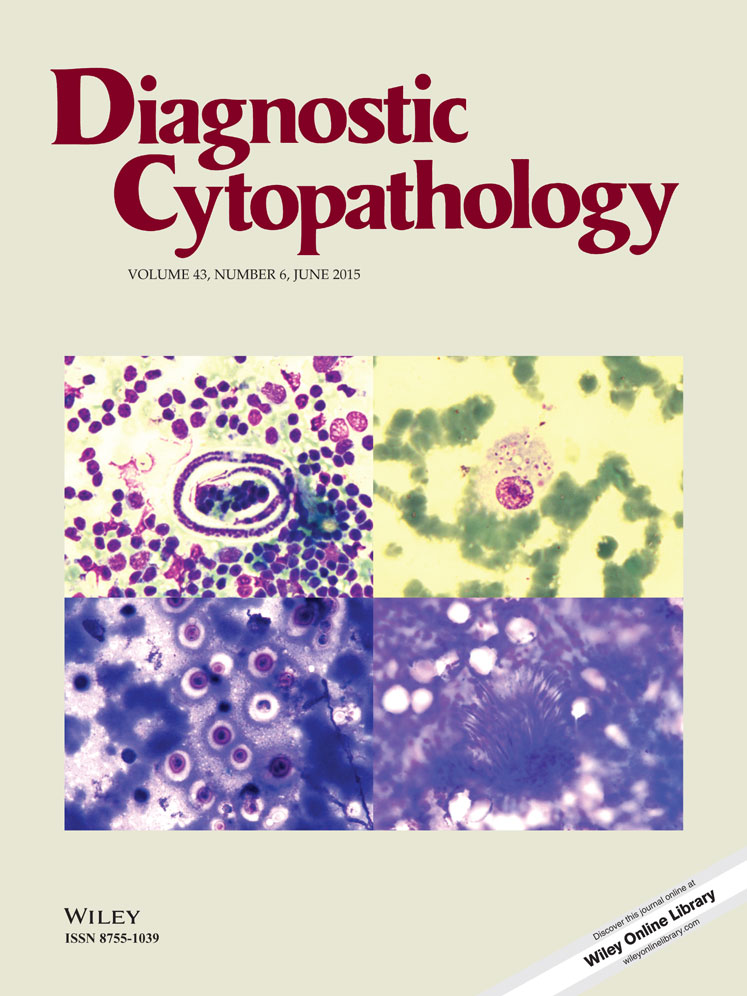Cytomorphology of sebaceous carcinoma with analysis of p40 antibody expression
Abstract
Background
Sebaceous carcinomas (SBCs) are aggressive tumors with the potential to cause great morbidity and mortality. Poorly-differentiated tumors may at times pose challenges for the correct diagnosis. p40, a new antibody that targets a short isoform of p63 has been shown as a promising squamous cell marker. In this study, we sought to evaluate cytomorphological features of SBC and p40 expression analysis.
Methods
A total of 29 previously diagnosed cases of SBCs including fine-needle aspirates and histopathology specimens from various sites were reviewed and studied for p40 expression. p40 nuclear expression was semi-quantitatively assessed. Adequate positive and negative controls of non-small cell lung carcinoma were taken for comparison. Expression pattern of normal sebaceous glands was also analyzed.
Results
Of the 29 cases, 13 (44.8%) were from the periocular region. The most common extraocular site was parotid gland. Morphologically tumors were categorized into well- and poorly-differentiated varieties based on extent of sebaceous differentiation. p40 positivity was seen in all cases of cytology aspirates and histology sections with similar intensity. No difference in percentage positivity of cells was recorded in well- and poorly-differentiated tumors.
Conclusion
p40 can be a valuable marker when evaluating tumors with possible sebaceous differentiation. Although p40 expression in SBCs is not as useful for the differential diagnosis that includes poorly-differentiated squamous cell carcinoma, this study, for the first time in the literature, highlights an important observation that p40 can be utilized as a marker for sebaceous lineage. Diagn. Cytopathol. 2015;43:456–461. © 2015 Wiley Periodicals, Inc.




